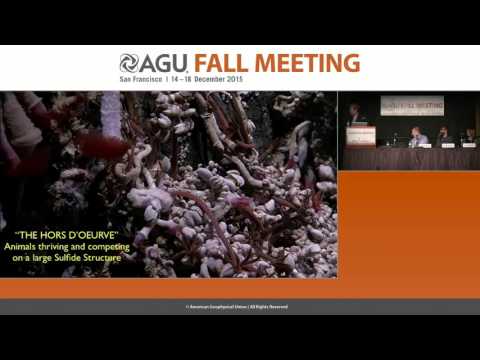Description:
Explore groundbreaking discoveries from real-time tracking of an underwater volcanic eruption in this 44-minute press conference from the AGU Fall Meeting 2015. Delve into the fascinating world of submarine volcano-hydrothermal systems as scientists discuss the onset and evolution of the Axial Seamount eruption, located 320 kilometers off the Oregon coast. Learn how a newly installed network of cabled sensors, part of NSF's Ocean Observatories Initiative, enabled unprecedented monitoring of this extreme environment. Gain insights into the eruption's progress, subsequent mapping, and seafloor sampling techniques. Discover how these 'natural laboratories' at the bottom of the sea are revolutionizing our understanding of underwater volcanic activity, from mega plumes to lava flows. Explore topics such as bottom pressure tilt, water column changes, seismic activity, and microbial biomass in the subsea floor. Understand the implications of this research for studying life beyond Earth and developing biofuels. Hear from expert participants including John Delaney, Scott Nooner, William Wilcock, and Julie Huber as they present their findings and discuss the future of ocean sciences in this new era of real-time, interactive experiments.
Read more

Real-Time Tracking of Underwater Volcanic Eruption at Axial Seamount - Discoveries and Insights
Add to list
#Science
#Earth Science
#Oceanography
#Biology
#Marine Biology
#Seismology
#Engineering
#GIS
#Remote Sensing
#Geophysics
#Hydrothermal Vents